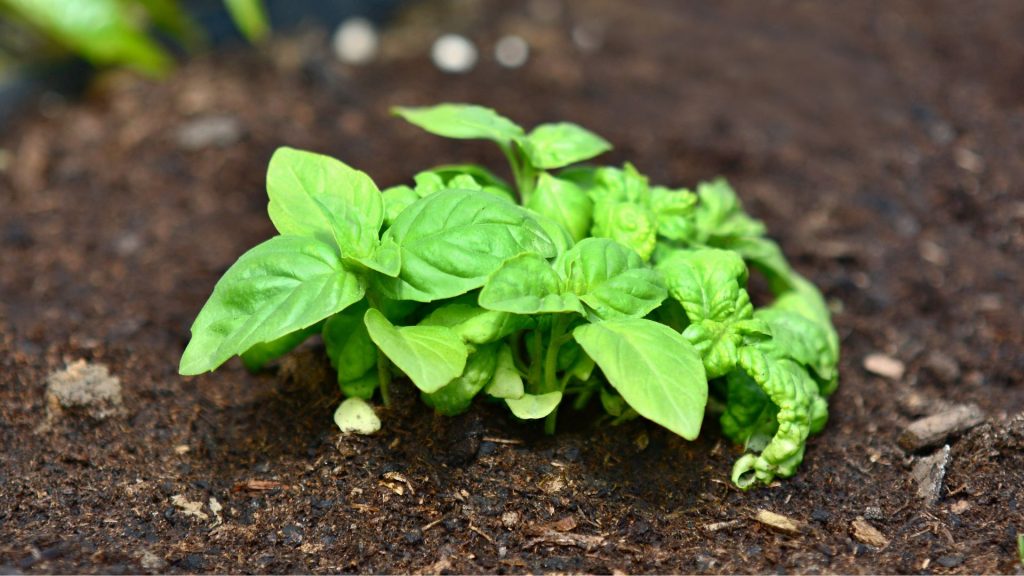Basil is a staple herb in any kitchen. Its fresh aroma enhances your cooking nicely. Think Italian. Those delicious tomato sauces, that punchy pesto, even sprinkled on a salad your dishes will be begging for some fresh basil. What’s even better is if you’ve grown the basil yourself. Imagine telling all your dinner guests you’ve been growing basil and have used your own herbs in their evening meal. You may be mistaken for a professional chef!
Ok, ok. Let’s not get ahead of ourselves. First, you have to learn how to grow basil at home before wowing your friends and family.
Growing basil indoors is a bit like riding a bicycle. Scary at first but once you’ve got the hang of it you won’t ever want to stop!
There are many different guides to growing herbs in pots for beginners out there. This simple guide will focus on growing basil in pots indoors and a short section for those of you wishing to know about growing basil outdoors.
Selecting Basil Varieties
Different Types of Basil
Basil (Ocimum basilicum) is a popular herb known for its aromatic leaves and versatile culinary uses. There are numerous basil varieties, each with its own distinct characteristics, flavors, and culinary applications. Here are some common types of basil:
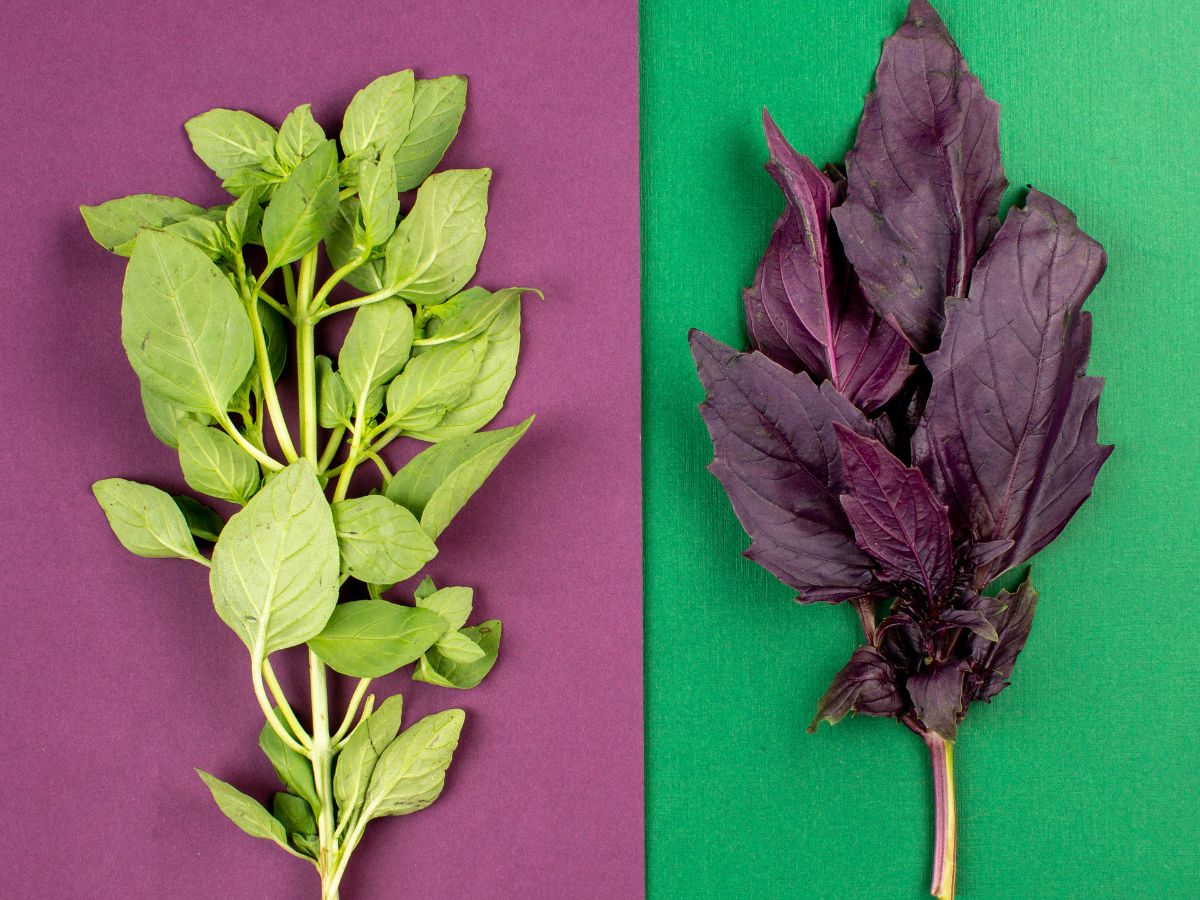
- Sweet Basil: Also known as Genovese basil, sweet basil is the classic basil variety used in Italian cuisine. It has a sweet, slightly peppery flavor and a strong aroma, making it ideal for pesto, tomato-based sauces, salads, and more.
- Thai Basil: This basil variety is popular in Thai and Vietnamese cuisine, known for its licorice-like flavor with hints of anise and mint. Thai basil has purple stems and a unique aroma that adds an exotic twist to stir-fries, curries, and noodle dishes.
- Lemon Basil: As the name suggests, lemon basil has a refreshing lemony flavor and aroma. It is commonly used in teas, desserts, and seafood dishes to add a bright, citrusy note.
- Purple Basil: Purple basil has striking dark purple foliage and a slightly milder flavor compared to sweet basil. It adds a pop of color to salads, garnishes, and pesto, and is often used for decorative purposes in the kitchen.
- Cinnamon Basil: With a warm, spicy flavor reminiscent of cinnamon, this basil variety adds a unique twist to desserts, teas, and fruit salads. It has a reddish tinge to its leaves and is known for its ornamental value.
- Holy Basil: Also known as Tulsi, holy basil is a sacred herb in Hindu culture and is revered for its medicinal properties. It has a strong, spicy flavor with a hint of clove and is used in teas, medicinal remedies, and as a culinary herb.
- Globe Basil: Globe basil, also called bush basil, is a compact variety with small, round leaves and a mild flavor. It is often used in ornamental gardens or as a border plant, and its leaves can be used in salads or as a garnish.
- African Blue Basil: This basil variety has striking purple stems and flowers, and a strong, spicy flavor with hints of cloves and mint. It is often used for its ornamental value in the garden, and its flowers are attractive to pollinators.
- Spicy Globe Basil: As the name suggests, spicy globe basil has a peppery flavor with a hint of spice. It has small leaves and a compact growth habit, making it suitable for container gardening or as an edging plant in the garden.
- Cilantro Basil: Also known as Mexican basil or anise basil, cilantro basil has a strong flavor resembling a combination of basil and cilantro, with a hint of licorice. It is commonly used in Mexican and Asian cuisine, particularly in salsas, soups, and sauces.
Choosing the Right Basil Variety for Your Needs
When selecting a basil variety, it’s important to consider your specific culinary preferences, growing conditions, and intended uses. Some factors to consider when choosing the right basil variety for your needs include:
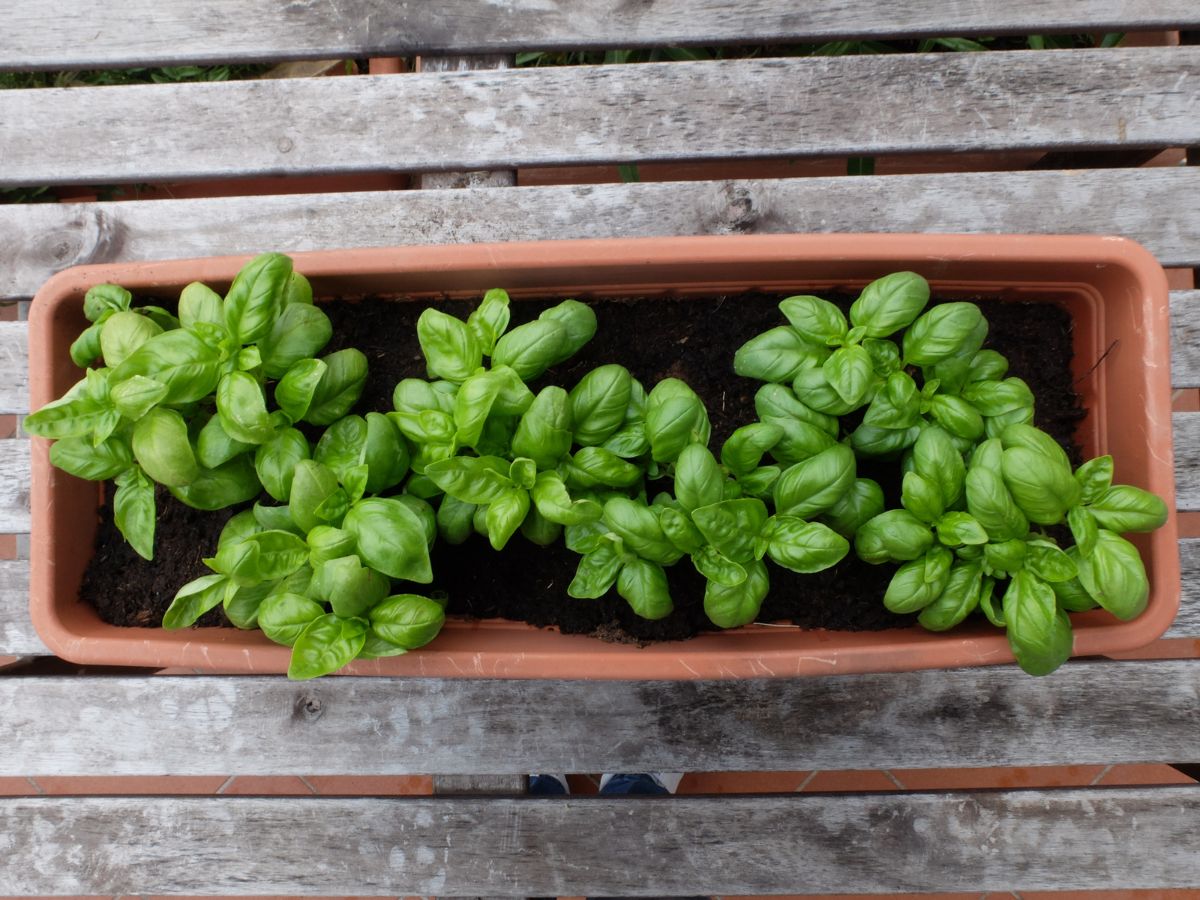
- Flavor profile: Different basil varieties have distinct flavor profiles, ranging from sweet to spicy to citrusy. Consider the flavor notes you want to add to your dishes and choose a basil variety that complements your culinary preferences.
- Culinary uses: Basil is used in a wide variety of cuisines, and each basil variety may have its own culinary applications. For example, sweet basil is ideal for Italian cuisine, Thai basil for Southeast Asian dishes, and lemon basil for desserts and teas. Consider the culinary uses of the basil variety you’re interested in and whether it aligns with your cooking style and preferred dishes.
- Growing conditions: Different basil varieties have varying requirements when it comes to sunlight, water, soil, and temperature. Consider the growing conditions in your region and choose a basil variety that will thrive in your climate and soil type. For example, Thai basil and holy basil prefer warm temperatures, while sweet basil and lemon basil can tolerate cooler temperatures.
- Availability: Some basil varieties may be more readily available in your local area or through online sources, while others may be harder to find. Consider the availability of the basil variety you’re interested in and whether you can easily obtain fresh seeds or healthy seedlings for planting.
- Ornamental value: Basil can also be grown for its ornamental value, as some varieties have unique foliage colors or interesting growth habits. If you’re looking to add aesthetic appeal to your garden or indoor space, consider basil varieties like purple basil, cinnamon basil, or African blue basil that have visually appealing features.
- Intended use: Lastly, consider how you plan to use the basil in your kitchen. If you’re planning to use it primarily for culinary purposes, choose a basil variety that complements your preferred dishes. If you’re planning to use it for medicinal or herbal remedies, consider basil varieties like holy basil or African blue basil which are known for their medicinal properties.
How to Grow Basil?
If you’re growing basil from seeds, here is a step-by-step guide to ensure you’re growing basil in the best way. The best part about growing basil indoors is that you can enjoy these herbs year-round.
Step 1. Pots & Soil
Find a container approximately 4-6 inches. When choosing your pot it is imperative it has drainage holes, as basil requires plenty of free flow when it comes to watering. Basil can be grown in a collection of pots side by side so each seedling has plenty of room to grow.
Fill each pot to the ¾ mark with nutrient-rich potting mix and water slightly so the soil is moist before planting the seeds.
Make sure you keep some of the potting mixes to one side as you will need to cover your seeds once planted.
Growing basil indoors will definitely require the use of fertilizer- if you’re planning to eat your basil, make sure you use organic fertilizer.
Step 2. How to Plant Basil
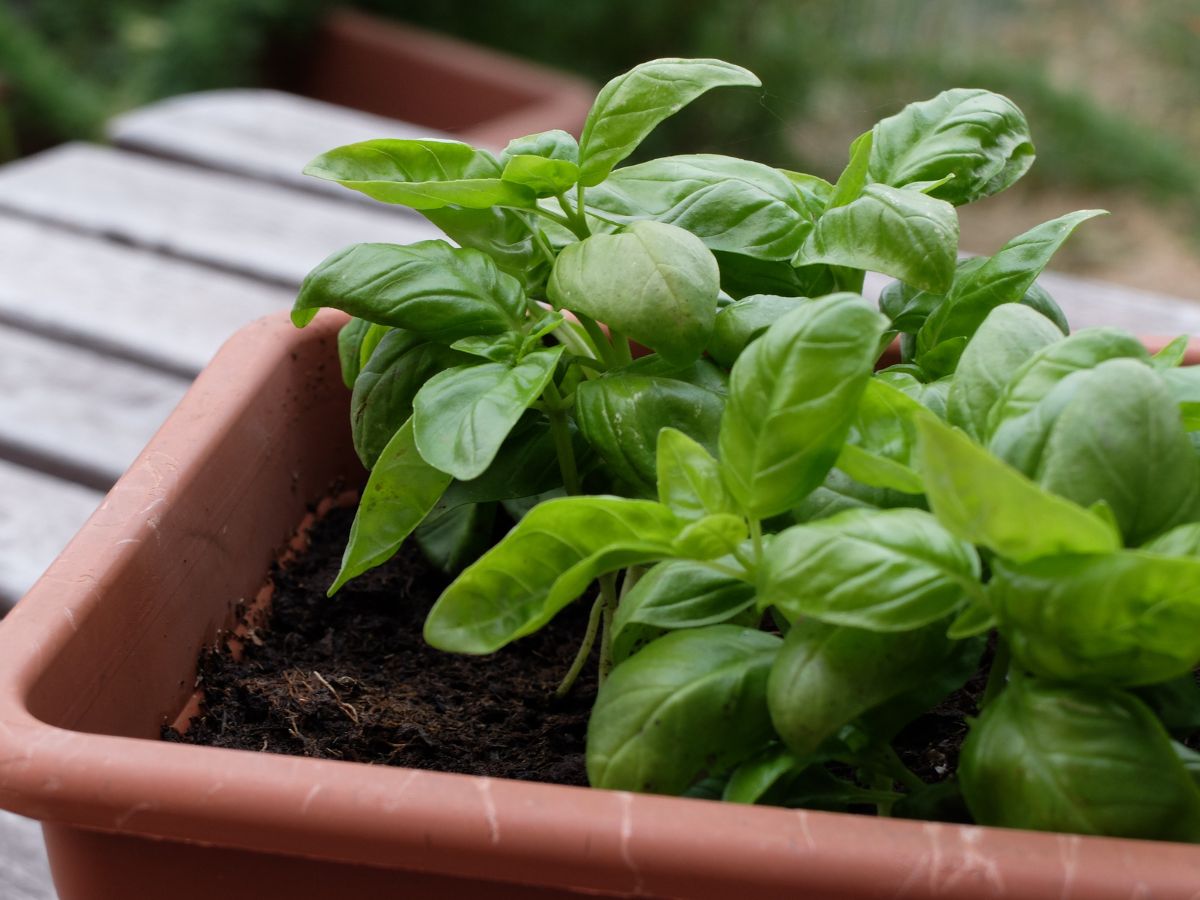
Now comes the time to learn how to plant basil.
You should already have your ¾ filled, well-draining containers ready. Sprinkle a few seeds on top of the soil and gently press each seed to submerge slightly. Add some of the spare potting mixes on top of your seeds to fill each container. Pack down firmly so the soil mix is not loose. As before, water your mix sparingly and find a suitable place to grow your basil. The perfect location for your newly planted basil is somewhere with lots of access to sunlight.
We suggest using fixing a freezer bag over the top, secured with a rubber band for the initial germination stage. You can remove this once leaves have started to form.
Step 3. Water
It is very important to understand how often to water basil. Basil grown both indoors and outdoors is very temperamental when it comes to water tolerance. The soil should always be damp so your herbs don’t dry out however should never look or collect too much water, as this could cause the roots to rot. It is best to set up a regular watering schedule. Watering your basil each morning is the ideal time as it will then have ample access to sunlight throughout the day and will ensure the water is absorbed effectively.
Step 4. Sunlight
Many of you may be wondering ‘does basil need full sun to survive?’ Well in this step we will cover all the basic basil sun requirements to ensure you have adequate knowledge to help your basil flourish.
The best place for your basil is by a window that receives at least 6 hours of sunlight per day. If you don’t have access to plenty of natural light, you can use a growing light instead. This should be used for approximately 10 hours throughout the day.
Using a compact fluorescent bulb will provide your basil with enough light to grow year-round.
Step 5. Basil Plant Care

The most crucial part of growing basil is to correctly provide the best basil plant care indoors. If forgotten about or neglected basil is not so forgiving and won’t give you those fragrant leaves we’ve come to love.
Make sure you follow this guide on the proper water and sunlight needs of your basil plant.
The soil should maintain consistent moisture and your basil should receive plenty of sunlight.
With this 5 step guide to growing basil indoors you are destined to have the most delicious basil plant going. But for those of you wishing to know how to grow basil outdoors, we’ve put the basics below.
Managing Pests and Diseases
Common pests that affect basil
Basil can be susceptible to various pests, such as aphids, spider mites, whiteflies, and slugs. Learn about the common pests that can infest basil plants and how to identify them, including the signs of their presence and the damage they can cause.
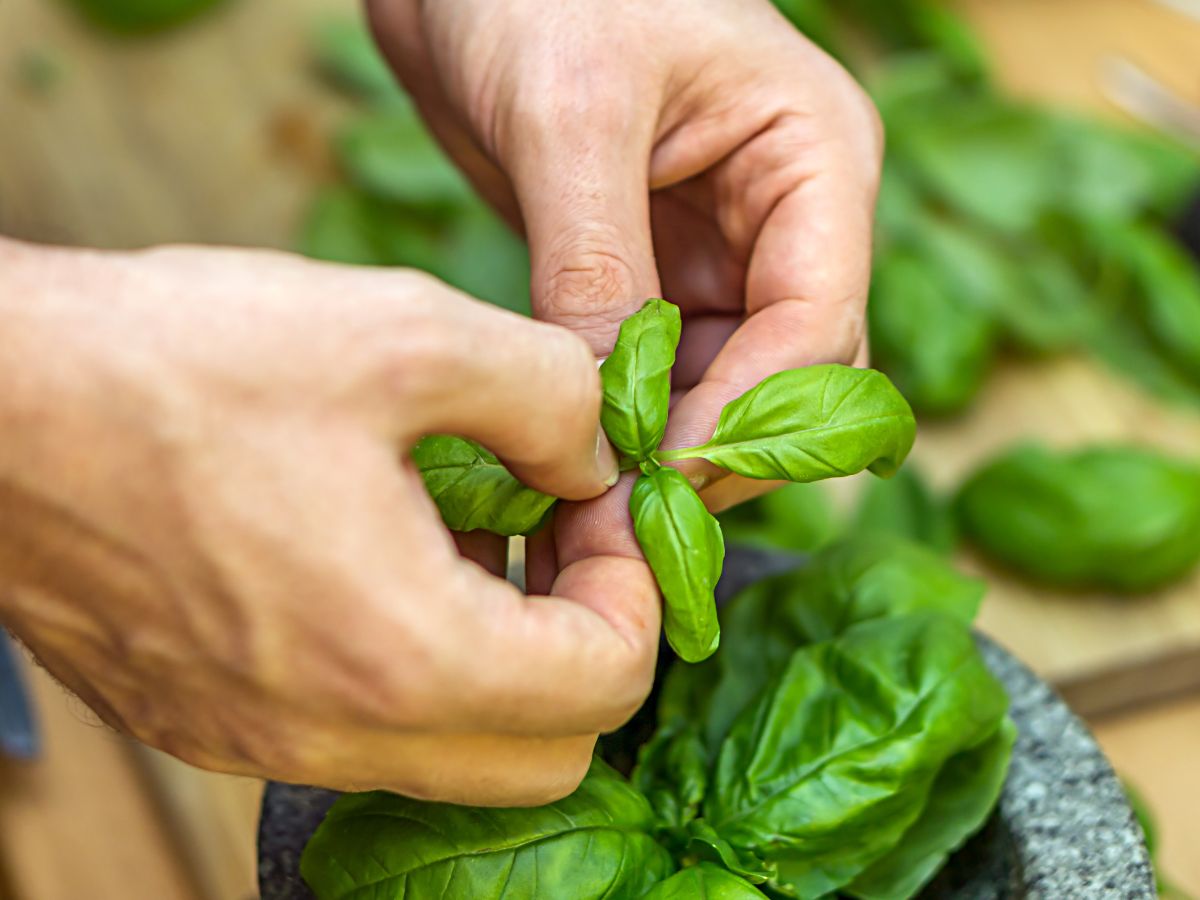
Natural remedies for pest control
There are several natural methods you can use to control pests in your basil garden without resorting to chemical pesticides. For example, you can introduce beneficial insects like ladybugs or lacewings that feed on pests, use neem oil or insecticidal soap spray, or make homemade organic pest repellents using ingredients like garlic, onion, or hot pepper.
Preventing and treating basil diseases
Basil can also be susceptible to various diseases, such as downy mildew, powdery mildew, and fusarium wilt. Learn about the common diseases that can affect basil plants, their symptoms, and how to prevent their occurrence through good cultural practices, such as proper watering, spacing, and ventilation. If disease does occur, learn about appropriate treatment options, including natural or chemical fungicides.
Harvesting Basil
Knowing when to harvest basil
Harvesting basil at the right time is crucial to ensure optimal flavor and aroma. Learn how to identify the signs that basil is ready for harvest, such as the size and color of the leaves, the presence of flowers, and the overall plant health. Avoid harvesting basil too early or too late, as it can affect the quality and taste of the herb.
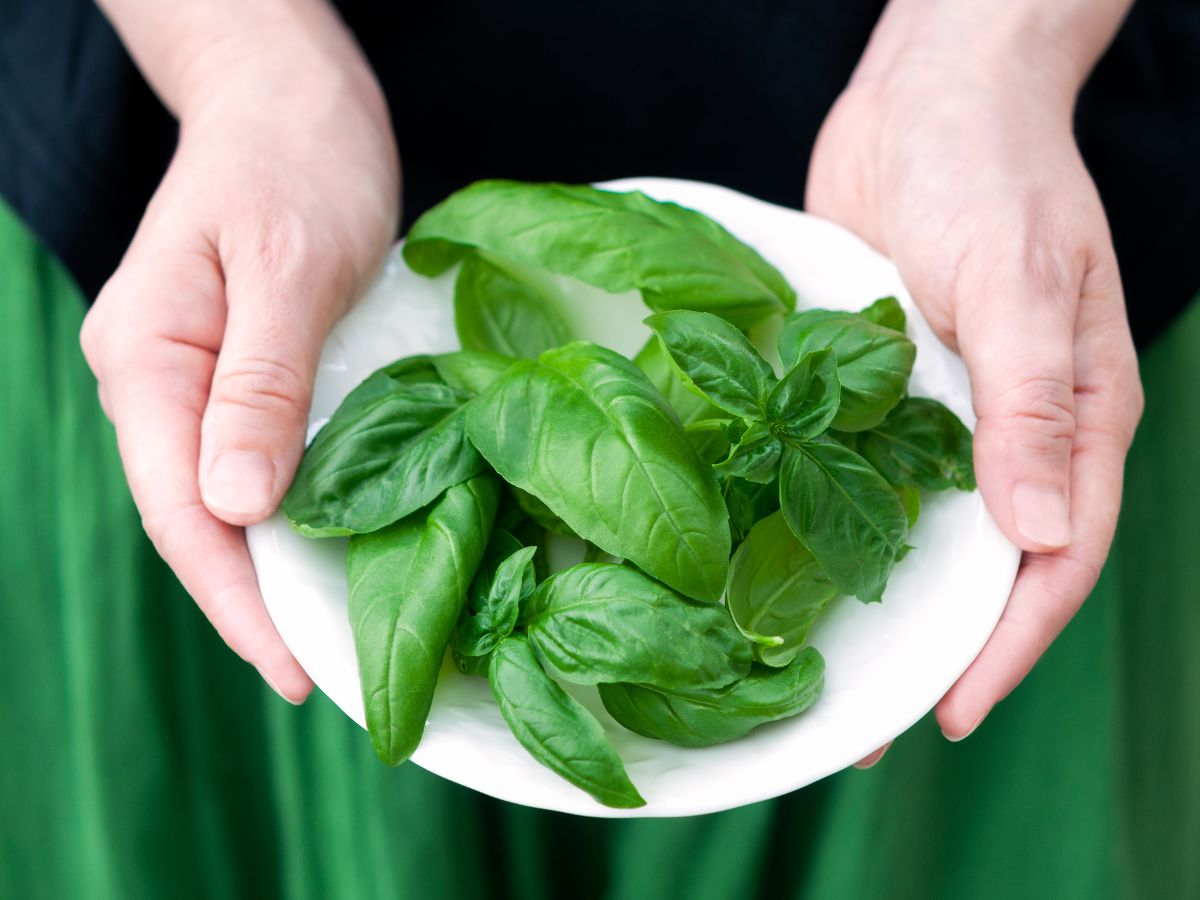
Proper techniques for harvesting basil
Use proper techniques when harvesting basil to avoid damaging the plant and to promote healthy regrowth. Learn how to harvest basil leaves, stems, and flowers correctly, using clean and sharp pruning shears or scissors. Avoid tearing or bruising the leaves, and always leave some leaves on the plant to allow for continued growth.
Storing harvested basil
Properly storing harvested basil is crucial to maintain its freshness and flavor. Learn the best methods for storing basil, such as air-drying, refrigeration, freezing, or preserving in oil. Understand the optimal storage conditions, such as temperature, humidity, and light exposure, to ensure that your harvested basil retains its quality and flavor for longer periods.
Troubleshooting Common Basil Growing Problems
Yellowing leaves
Learn about the common causes of yellowing leaves in basil plants, such as nutrient deficiencies, over-watering, or pest infestations. Discover effective solutions, such as adjusting nutrient levels, improving drainage, or using natural remedies for pest control, to prevent yellowing leaves and promote healthy basil growth.
Wilting basil plants
Basil plants can wilt due to various reasons, such as underwatering, overwatering, heat stress, or disease. Learn how to identify the signs of wilt in basil plants and take appropriate action, such as adjusting watering practices, providing shade, improving air circulation, or treating for diseases, to revive wilting basil plants and prevent further damage.
Leggy basil plants
Basil plants that grow tall and leggy can become weak and less productive. Learn the causes of leggy basil plants, such as inadequate sunlight, overcrowding, or lack of pruning, and implement strategies to prevent legginess, such as providing sufficient sunlight, spacing plants properly, and regular pruning for bushier growth.
Dealing with other common issues
Basil plants can face other common issues, such as pest infestations, diseases, nutrient imbalances, or environmental stress. Learn how to identify the signs of these issues and take appropriate measures, such as using natural pest control methods, adjusting nutrient levels, providing optimal growing conditions, or using organic fungicides or pesticides, to manage and prevent these problems from affecting your basil plants.
Conclusion
Growing basil can be a rewarding and enjoyable experience, providing you with fresh herbs for culinary use, aromatherapy, or even as a natural insect repellent. By following the steps outlined in this article, from selecting the right basil variety, providing optimal growing conditions, proper planting and care, managing pests and diseases, harvesting at the right time, troubleshooting common problems, and learning from experience, you can successfully grow basil in your own garden or indoor space.
Remember to pay attention to the specific needs of each basil variety, such as sunlight, water, soil, and temperature requirements, and adjust your care accordingly. Regularly monitor your basil plants for signs of pests, diseases, nutrient imbalances, or environmental stress, and take prompt action to prevent or address these issues. Implement organic and sustainable practices whenever possible to minimize the use of synthetic chemicals and promote a healthy growing environment for your basil.
Don’t be discouraged by challenges that may arise during the basil growing process. Gardening is a continuous learning journey, and with time and experience, you will become more proficient in growing basil and other plants. Seek guidance from experienced growers, gardening communities, or professionals when needed, and keep learning from your own observations and experiments.
Now you have this simple guide on how to grow basil and the proper way to care for your basil both indoors and outdoors. If you remember the key pointers, you’ll have your herb garden sprouting in no time!


